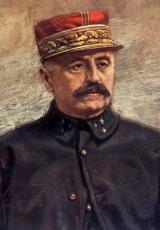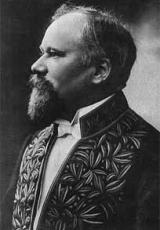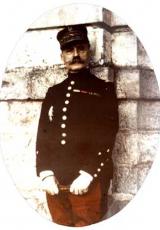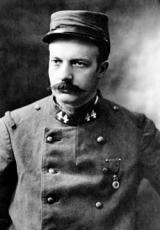The Polish in France
Sous-titre
1914-1918
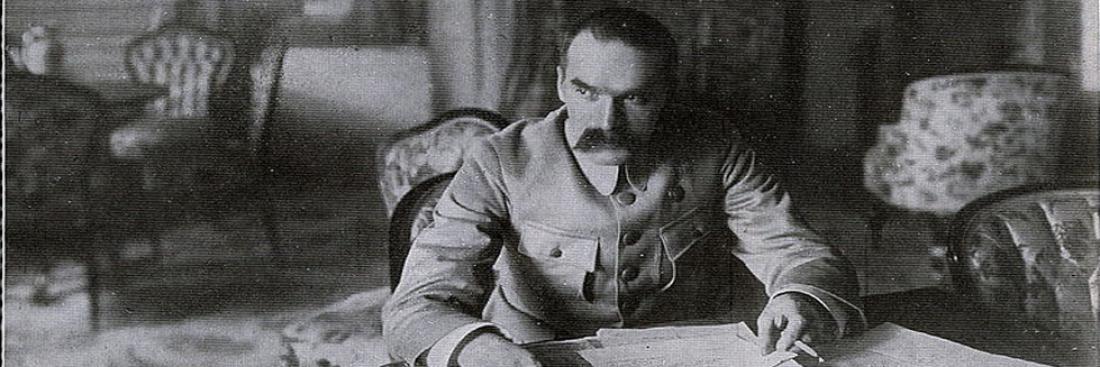
The Polish in France, 1914-1918

General Jozef Pilsudski, between 1910 and 1920. Source: Library of Congress. Public domain.
Among the Polish emigrants in France, the start of the Great War ignited the hope of a renaissance of the motherland, still divided at that time, dissolved into the German, Austrian and Russian empires. These Polish emigrants were mainly labourers from the mines in northern France, reunited in a gymnastics society in Le Faucon (Sokol). The intellectuals and businessmen lived in Paris.
From the first week of August 1914, in Paris, the Polish volunteers committee, created for the occasion, received hundreds of enthusiastic compatriots to enrol in the Foreign Legion. This influx of volunteers generated two contingents, one sent to Bayonne, the other to Paris to the barracks in Reuilly, where the Polish men were given military training, equipped and armed.

The Bajo?czyków Legion, the first Polish military formation in France during the First World War. Author: Corporal Michael Kaznowskiego. Public domain.
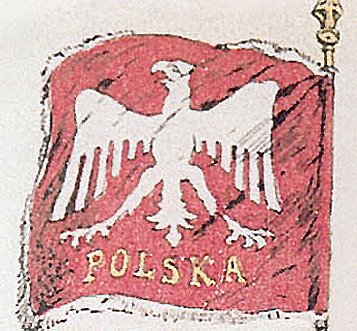
Polish flag. Source: CRDP de Reims.
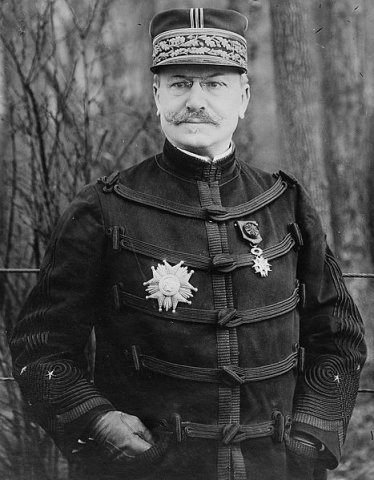
General Louis Archinard, first commander of the Polish army in France. Source: Library of Congress. Public domain.
On 17 January 1918, the 1st Polish Hunters Regiment (RCP) was created: The 1st and 2nd battalions based in Mayenne and the 3rd battalion and headquarters in Laval. The troops included many volunteers from America (following Gasiorowski's mission to the US, on 6 October 1917 the American government authorised the recruitment of volunteers) and 1,500 German former prisoners of war. The senior ranks were a mixture: of the 72 officers in this unit, there were 20 Polish from the Foreign Legion, four from the Russian army, 46 from the American army and two from the German army. The non-commissioned officers were 60% American with the remainder being German. But they were all driven by an ardent Polish patriotism.
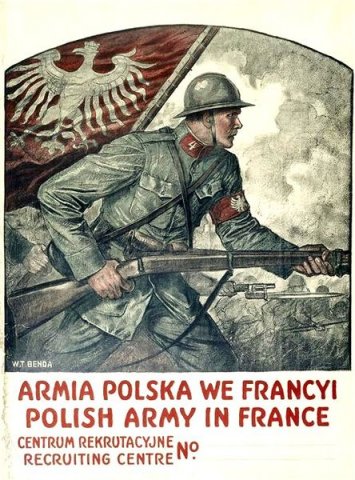
Poster by W?adys?aw Benda to recruit Polish volunteers in the US. Author: W.T. Benda. Source: Library of Congress. Public domain.
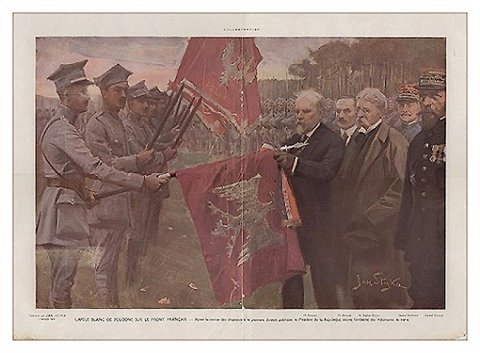
Poland's white eagle on the front in France, 22 June 1918. Painting by Polish artist Jan Styka. Source: Album of the war of 1914-1919. © L'illustration

14 July 1918, Polish troops parading on Place de la Concorde. Source gallica.bnf.fr / Bibliothèque nationale de France
With the influx of volunteers, on 4 August, the 1st Infantry Division, led by the French General Vidalon, was created and comprised Polish units: the 1st, 2nd and 3rd hunting regiments, a squadron of light horsemen, a company of engineers, with the support of the French artillery (75 men from the 1st Field Artillery Regiment and 155 men from 113th Heavy Artillery Regiment).

Polish hunters in France. Source: Private collection. DR
On 28 September 1918, an agreement between the French government and the Polish national council, directed by Roman Domwski, recognised the Polish army as independent, allied and fighting under Polish command and subordinate to the national council. A second Polish infantry division was founded. Together with the 1st, it formed the Polish army in France, made up of 430 officers and 17,000 non-commissioned officers and soldiers. General Haller was appointed to the helm on 4 October 1918 by the national council.

General Haller taking an oath on the flag of the 1st Polish Regiment, 6 October 1918. Source: Private collection. DR
After Champagne, the 1st ID occupied a sector in the Vosges from mid-September and then, on 5 November, it joined the front in Lorraine, in the offensive planned against Metz, which did not take place since the Armistice was signed on 11 November.

Marshal Pétain congratulating the Polish. 1919. Source gallica.bnf.fr / Bibliothèque nationale de France

Victory celebrations, 14 July 1919. The Polish. Source: Postcard. Private collection.
In 1920-1921, during the Russian-Polish War, many French soldiers (officers and technicians) helped the Polish forces to win the campaign against the Red Army led by Leon Trotsky and to conquer Western Ukraine, to Russia's frustration.

Arrival of Marshal Foch and his wife, coming from Poland, at the Gare de l'Est in Paris. Source gallica.bnf.fr / Bibliothèque nationale de France
Cemeteries and monuments
By letter dated 27 February 1922, the Minister of War of the Polish Republic, General Sosnkowski, wrote to the Minister of Pensions, André Maginot, to express the Polish nation's desire for its sons buried on French soil to be reunited in a cemetery specially for them. On 16 March, Minister Maginot replied that the State would be delighted to offer the Polish government the necessary land and transfer the groups of bodies of Polish soldiers at its own expense.

The National cemetery in Aubérive where Germans, French and Polish who fell during the First World War are buried. Author: Gérald Garitan. Source: Licence Creative Commons Paternité. Public domain.

Graves in the Polish section of the national cemetery (Aubérive). Author: Gérald Garitan. Source: Licence Creative Commons Paternité. Public domain.
Over 23,461 square metres, Aubérive guards the bodies of 6,424 French, of which 2,908 are buried in three ossuaries, and 129 Polish, fighters in the First World War, along with 256 Polish from the Second World War. Some 175 Polish soldiers from 1914-1918 are buried in 28 other French Departments, including 54 in Meurthe-et-Moselle, 32 in the Vosges, 22 in Sarthe and 13 in Hauts-de-Seine.

The National cemetery in Aubérive where Germans, French and Polish who fell during the First World War are buried. Author: Gérald Garitan. Source: Licence Creative Commons Paternité. Public domain.
On 25 July 1954, the monument to the Polish soldiers who fought in the Great War in the Aubérive cemetery, designed by Regulski, was inaugurated by General Pierkarski, watched on by a large crowd including veterans from both countries, their families and the local authorities. Soldiers from the 7th Cuirassiers from Reims formed a guard of honour.

Monument to the Polish dead. Source: Ville de Neuville-Saint-Vaast
In Pas-de-Calais, the monument to the Polish enlisted in the Foreign Legion, a work designed by sculptor Maxime Real del sarte, was erected in the town of Targette (Neuville-Saint-Vaast). Erected in December 1929, thanks to the Polish from Pas-de-Calais who formed a committee to raise the necessary funds, it was inaugurated on 21 May 1933 by the Polish Ambassador.

Cemetery in Neuville Saint Vaast - La Targette. Source: Jean-Pierre Le Padellec
external websites :
CRDP Champagne Ardenne
Neuville Saint Vaast
Légion étrangère
Personalities
Related articles
- The French Foreign Legion
- La Paix
- La Première Guerre mondiale (1914-1918)
- La Victoire... et ensuite ?
- L'année 1918 : la rupture de l'équilibre
- L'assaut final
- Le corps expéditionnaire russe pendant la Première Guerre mondiale
- 11 November: a day of remembrance
- 1918 - Les temps forts d'une année de combat


